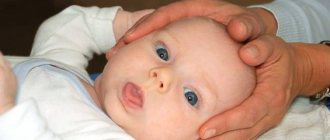Symptoms of the disease
In the clinical picture of the disease, two types of disorders are distinguished: neurological and mental.
These include:
- disorders of consciousness;
- changes in the sleep cycle (severe drowsiness occurs during the daytime, and insomnia occurs at night);
- behavioral deviations (sharp changes in mood, causeless apathy, indifference and detachment);
- intellectual disorders (forgetfulness, confusion of thoughts, impaired fine motor skills, writing and memory);
- lack of emotional coloring of speech.
In addition, due to disturbances in the liver, the smell of acetone from the mouth may appear. Its appearance is due to the fact that the body, trying in every way to get rid of decay products, removes them using the respiratory system.
In some cases, the presence of liver failure can be judged by the appearance of asterixis - asymmetrical sweeping arrhythmic muscle twitching that occurs in the neck and limbs after their tonic tension. In some cases, encephalopathy affects the part of the brain responsible for regulating body temperature, which can cause a sudden change in temperature.
Based on the speed of onset of symptoms, the disease is divided into acute and chronic forms. The acute form develops lightning fast and quickly, and can lead to a coma. The chronic form develops gradually over time.
In its development, the disease sequentially goes through several stages:
- The first stage is subcompensation. This stage is characterized by the development of the disease, mental changes occur (apathy, sleep disturbances and sudden changes in mood), accompanied by lesions of the skin and mucous membranes.
- The second stage is decompensation. At this stage, mental disorders worsen, the patient becomes irritable and aggressive. Fainting and inappropriate behavior may occur.
- The third stage is terminal. It is accompanied by depression of consciousness up to a state of complete detachment, but the reaction to the stimulus (especially painful ones) may persist.
- The fourth stage is coma, characterized by a complete lack of response to stimuli, convulsions appear. At this stage, one patient out of 100 survives.
Diagnosis of the disease
The main goal of diagnosis is to identify characteristic symptoms, determine the severity of the lesion and the stage of development of the disease. A detailed medical history can play a huge role (it is important to find out whether the patient has previously suffered from hepatitis, abused alcohol or taken uncontrolled medications).
A consultation with a gastroenterologist should be carried out in the early stages of the disease. It is very important that the gastroenterologist pays attention to symptoms of a neurological and psychological nature. Identification of symptoms of brain tissue damage in a patient in a comatose state indicates the possibility of an imminent death.
To confirm the diagnosis, the following laboratory diagnostic methods are used:
- blood test (diagnoses anemia, inhibition of platelet production, leukocytosis);
- coagulogram (detects coagulopathy, after development, which is DIC syndrome);
- liver tests (an increase in all markers characterizing the condition of the liver is noted, without exception).
If necessary, diagnostic methods are used to identify lesions in other organs and systems of the body.
To determine the extent of damage to the liver and other internal organs, hardware diagnostic methods such as ultrasound, MRI and CT are used. If encephalopathy is suspected, a biopsy of liver tissue is required (allows us to find out the cause of the disease). Electroencephalography is used to assess the condition of brain tissue.
What helps a doctor identify a disease?
An important sign is the presence of liver disease in the stage of cirrhosis. It is also necessary to exclude other causes that may trigger the development of encephalopathy: for example, vascular diseases.
Liver cirrhosis has the following external symptoms:
- yellowness of the skin,
- fluid retention in the body, which manifests itself as ascites (an increase in the volume of the abdomen and swelling of the lower extremities),
- tendency to bleeding, manifested in the form of bruises and bruises on the skin,
- “jellyfish head” - expansion of the saphenous veins on the abdomen,
- numerous spider veins on the skin of the body,
- palmar erythema - redness of the skin of the palms,
- a special “liver” smell emanating from the patient,
- "popping" tremor.
Also read a detailed article about the symptoms of liver cirrhosis.
Signs of hepatic encephalopathy are quite nonspecific, which makes diagnosis difficult. Often this condition is difficult to distinguish from other causes of damage to the central nervous system, accompanied by changes in mental state:
- metabolic,
- tumor,
- infectious,
- medicinal,
- drugs,
- traumatic,
- cerebrovascular, etc.
At the moment, there are no clear criteria to distinguish hepatic encephalopathy from other causes of encephalopathy. The main diagnostic method is to collect anamnesis: the presence of signs indicating liver cirrhosis. The most commonly used are psychometric tests for the digital sequence of numbers, as well as tests that analyze the patient’s psycho-emotional state and assess the level of anxiety and depression.
An instrumental diagnostic method is an electroencephalogram, which allows one to detect changes in the activity of the cerebral cortex. Computer or magnetic resonance therapy reveals various changes in the structure of the brain.










